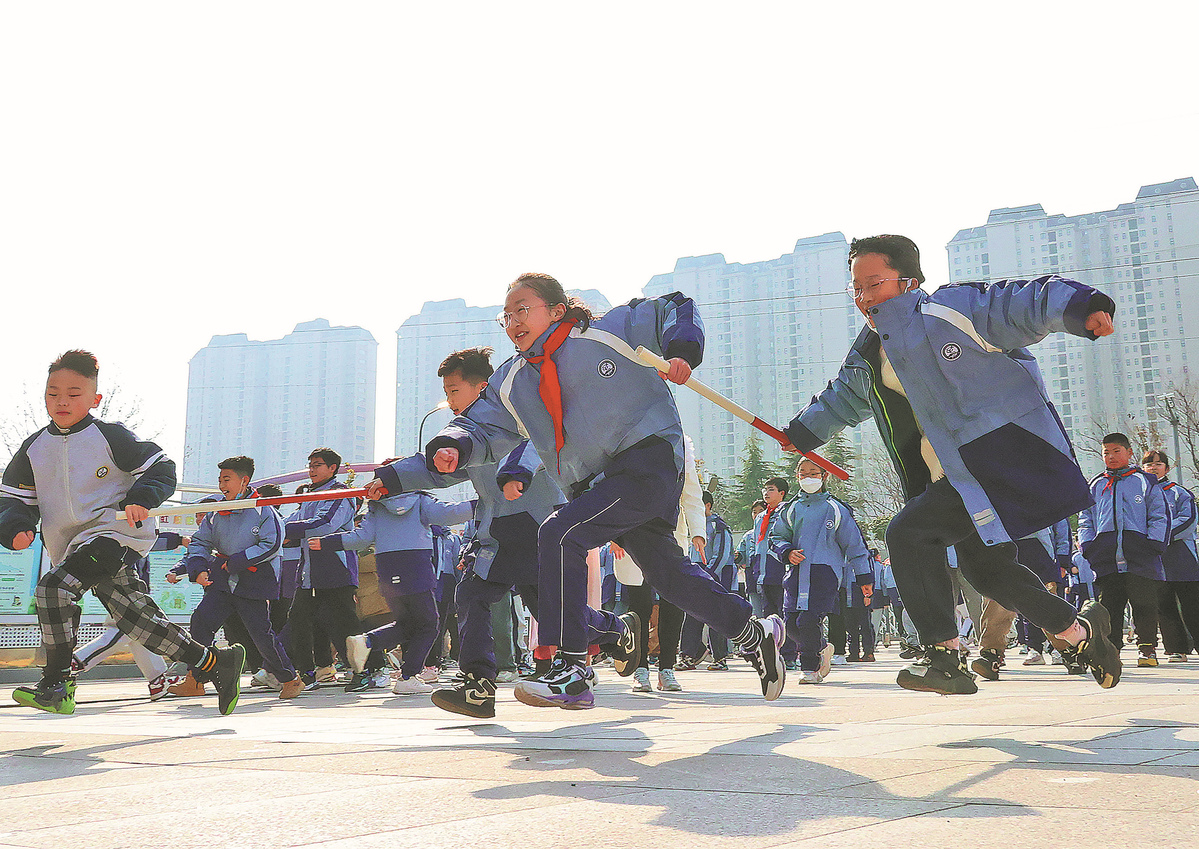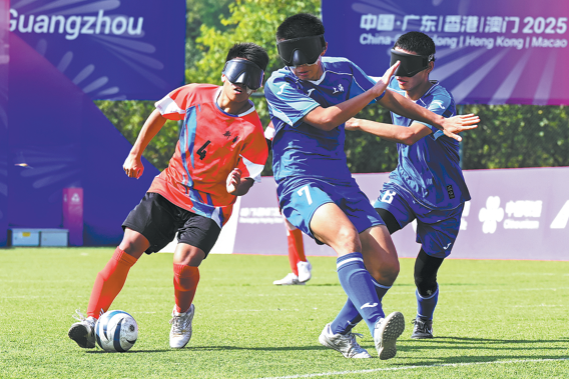Guidelines aim to reduce rate of childhood myopia


Four govt departments intensify efforts to protect visual health
A series of guidelines were issued recently as part of China's efforts to control and prevent myopia among children and protect their ocular health.
Four government departments, including the Ministry of Education and the National Health Commission, released the guidelines this month, which is national myopia control and prevention month.
The guidelines said middle schools, primary schools and kindergartens in national experimental zones for child and adolescent myopia prevention and control must put up visual acuity charts. The measure aims to promote self-examination among students, allowing teachers and parents to monitor their visual health and take prompt action as needed.
The guidelines also said that all primary and middle schools should implement eye exercises and regular activities during breaks, ensuring students have more time for outdoor activities and looking into the distance to relieve visual fatigue.
The myopia rate among children and adolescents hit 52.7 percent last year, and the age range for the incidence of high myopia has shifted forward by two years to around six to 10 years old, the commission said.
The myopia rates are 35.6 percent for primary school students, 71.1 percent for secondary school students, and 80.5 percent for high school students. The lack of regular vision checkups, knowledge of eye care and time for outdoor activities are exacerbating the situation, it said.
Outdoor activities are important to students' eyesight because exposure to natural light can stimulate the release of dopamine in the retina, which slows the elongation of the eyeball and mitigates the onset of myopia.
However, some schools place too much emphasis on academic skills and drills that cut into the time students have for free play during breaks between classes. Some teachers use break time for lessons, and some schools restrict students' access to playgrounds during the 10-minute breaks to prevent potential conflicts among peers or other risks.
Realizing the significance of break time for students' physical and psychological well-being, China has repeatedly emphasized the importance of ensuring students' right to free play during their breaks.
At a news conference during the annual two sessions — the annual meetings of the national legislature and top political advisory body that concluded on Monday — Education Minister Huai Jinpeng said that to address issues such as poor eyesight and obesity among students, they should do one hour of exercise every day and be provided with ample break time to cultivate exercise habits.
Li Yanhu, a member of the National Committee of the Chinese People's Political Consultative Conference and a physician at the General Administration of Sport's Institute of Sports Medicine, suggested adjusting schedules in primary and middle schools. For students up to the fifth grade, both class time and break time should be adjusted to half an hour, Li said, with 40-minute classes and 20-minute breaks for students from the sixth grade to middle school.
National People's Congress deputy Fan Xianqun, who is also deputy dean of Shanghai Jiao Tong University, attributed children's visual health issues to the overuse of eyes, lack of outdoor activities and sleeping time, and bad eye care habits. He suggested departments collaborate to explore the mechanism of myopia and enforce the "double reduction" policy that aims to reduce students' workloads by reducing homework and extracurricular tutoring.
- Cold wave to bring snow risks across northern China
- Reform, human rights protection go hand-in-hand for China, report finds
- China sends remote-sensing satellite into orbit
- China surpasses childcare goal ahead of schedule
- China rolls out 2-ton unmanned cargo plane
- China begins trial of faster, more detailed AI dust forecasting system


































